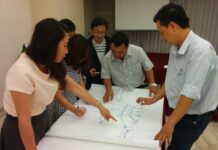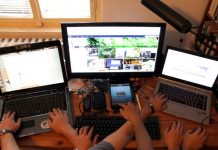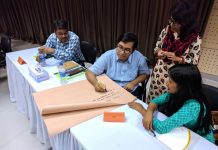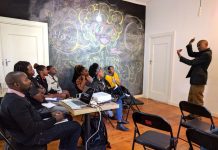Setting up a successful newsgathering operation

In this module newsgathering is discussed from the perspective of the TV news process.
Those involved in newsgathering include reporters, planning editors, camera people, assignment editors, field producers, and the news executives responsible for output.
The newsgathering process involves sourcing ideas, planning coverage, assigning teams, structuring packages, monitoring the web, working in the field – and coming back alive and well.
Planning
Planners are often the forgotten heroes and heroines of the newsroom; they are often elbowed aside in the rush for today’s stories. That’s a mistake. Planned material should not be dropped without good reason. Planners should be encouraged to keep coming up with ideas for special reports, background investigations, time-consuming graphics and other projects that require effort.
Editorial meetings
Balancing creativity with decisiveness is a difficult trick. Daily editorial meetings should be chaired by a senior figure, but all voices should be heard, not just those of the senior editors or the chronically verbose. The best ideas often come from the small voice at the back. Set a start time and begin punctually, irrespective of latecomers – they’ll get the message. Also set an end time – half an hour should be plenty.
Managerial oversight
To ensure that the planning team is following the agreed editorial strategy, managers must make their objectives known at an early stage in the creative process. News coverage should be discussed at least a week in advance, at a weekly editorial meeting, followed up by another meeting the day before transmission. Managers must attend these gatherings. There is nothing more dispiriting for journalists to see their hard work brushed aside at a late stage because managers have not been properly monitoring the stories being prepared.
Newsroom geography
Are you sitting comfortably? The simple geography of an input operation makes a big difference to its efficiency. The following should all be able to see each other, talk to each other and overhear conversations – assignments editor, web editor, show editor, technical/facilities bookers (dishes, feeds, studios etc) and ideally the show director. It’s amazing how often they can’t.
Breaking news
There is a simple set of rules for breaking news on TV – it goes like this. Once the story is out there, desks need to do the following:
- assign a reporter to monitor incoming information, and be ready to appear live.
- chase witnesses on the phone.
- seek video material from the scene.
- monitor Twitter, YouTube and other sources.
- deploy hardware and people.
- plan schedule changes, on-site anchoring and the like.
Has your news organisation ever written down a plan, because the day it happens might be the day when you have an inexperienced team on duty.
Monitoring
In a breaking story such as riots, demonstrations, bombings – social media will probably be ahead of the agencies. These sources have to be monitored. You must know which source to trust and which to follow. Ideally, you will have developed contacts in advance if you saw the story brewing.
Staff safety
If the story involves putting reporters and technicians in harm’s way, are you prepared? Journalists often get hurt covering street disturbances, political rallies, organised crime, even before they start working in wars and major conflicts. Employers and journalists need to take responsibility for safety, but sadly many don’t. You should reduce risk by training your staff for working in dangerous situations.
Organising the shoot
It’s surprising how disorganised some field teams can be. Camera crews sometimes don’t know what the story is, reporters haven’t requested graphics in advance, or a useful piece of extra equipment is left behind. The planning producer or reporter needs to think of all these things, such as extra lights, long lenses, graphics, and studio guests.
Lives
Most live reports still feature the reporter clutching a microphone and standing outside a government building. That’s sometimes appropriate, but with today’s lightweight equipment, live spots can be much more creative, with plenty of movement.
Packaging
Are the news packages on your show tightly crafted, with skilful editing, a minimal use of words, lots of natural sound and a simple narrative? Or are they overwritten, with words that don’t match the pictures, where the sound from the locations is smothered by the reporter’s breathless pre-recorded track? Ensure that your journalists know how to package properly.








